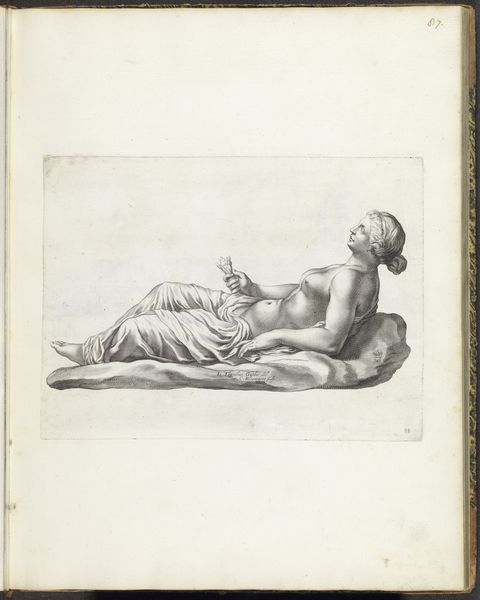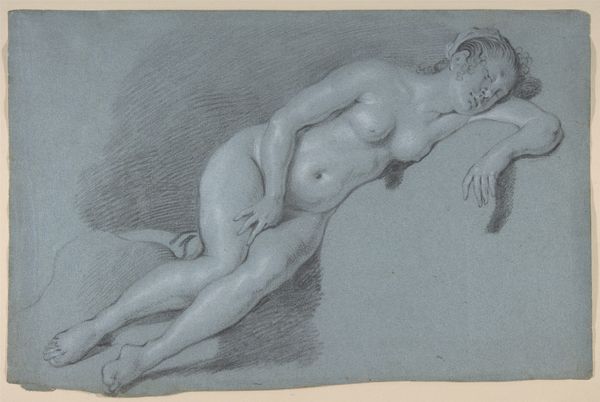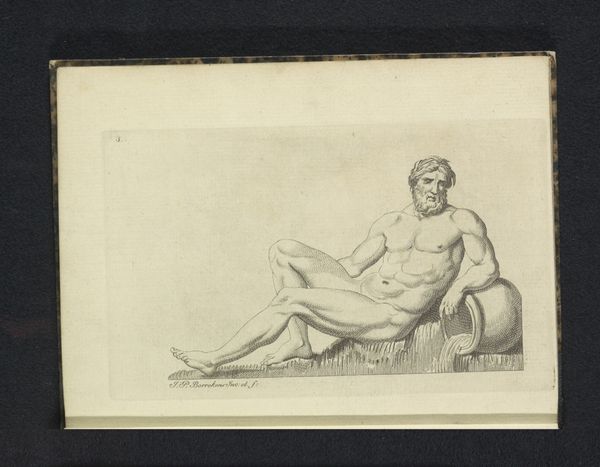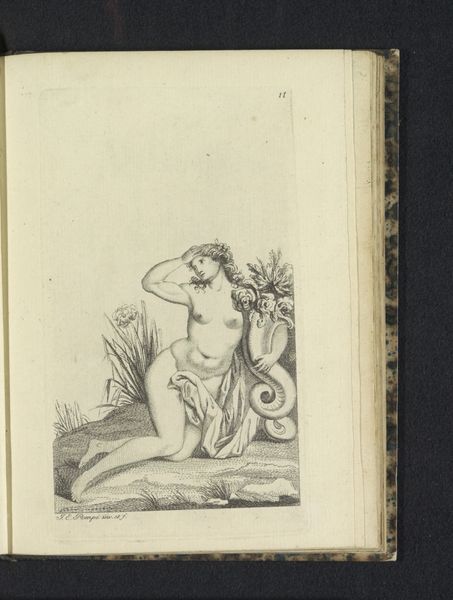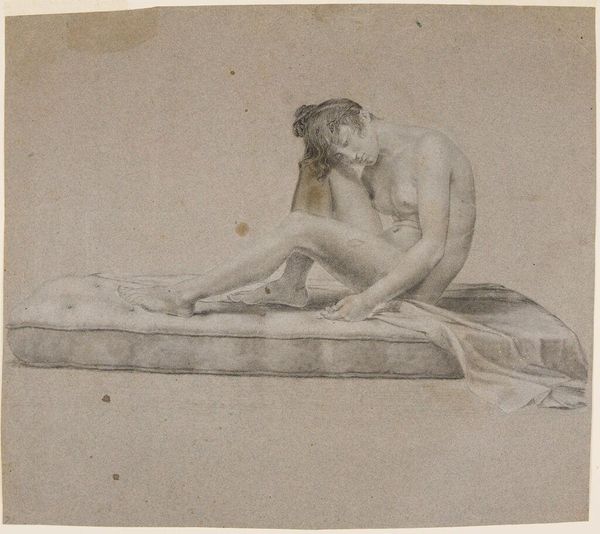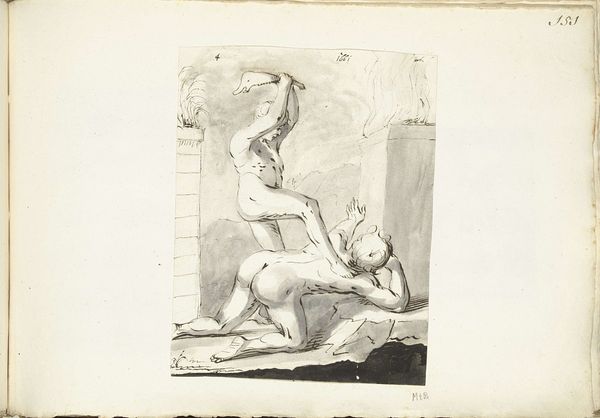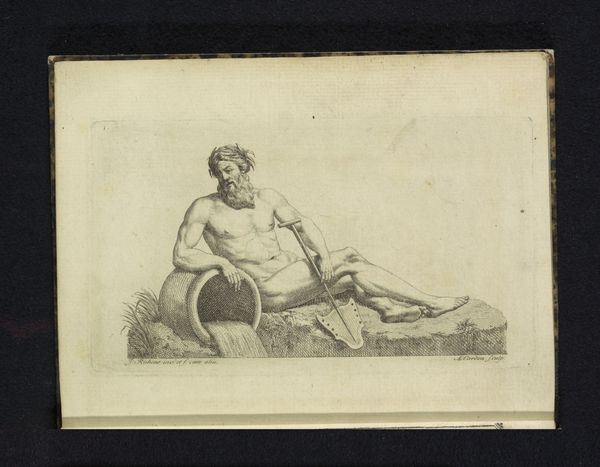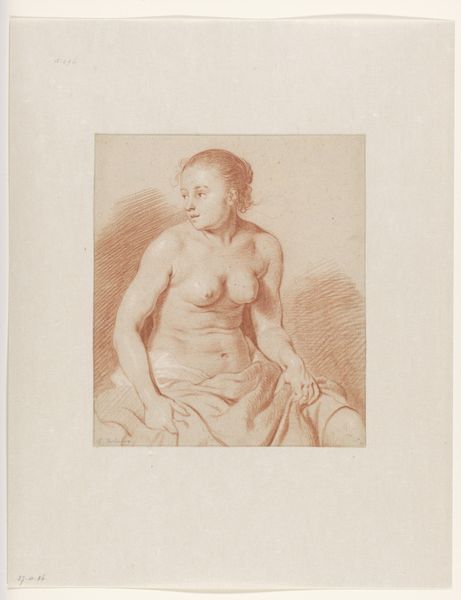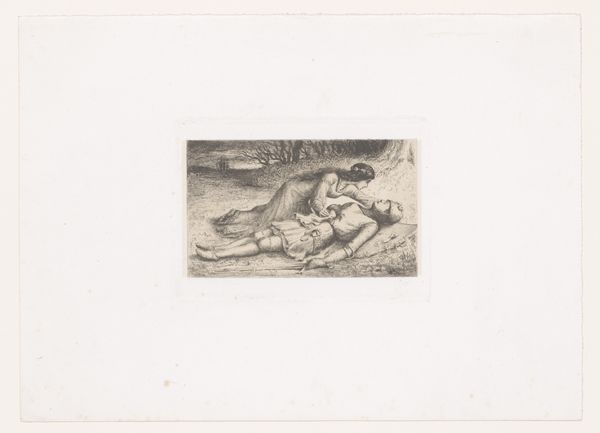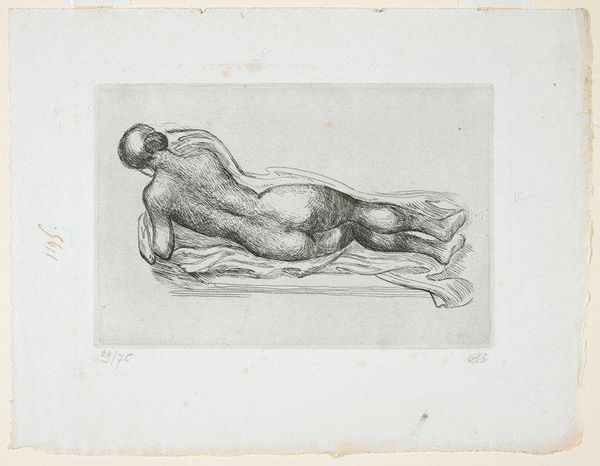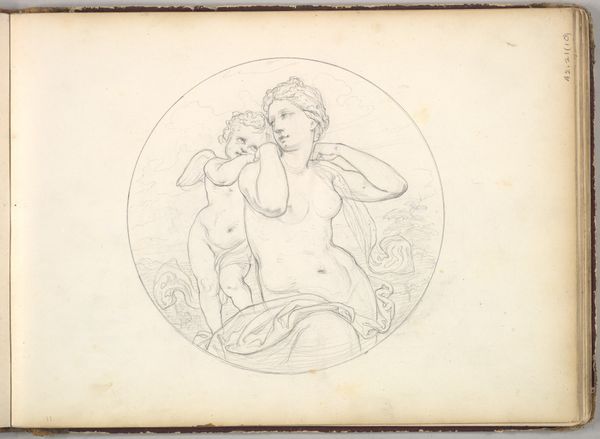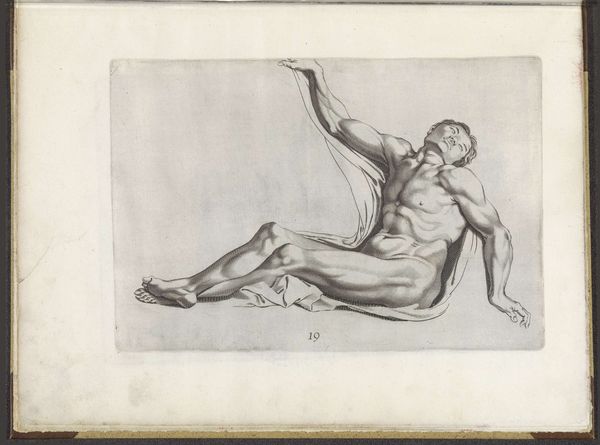
drawing, paper, ink, pencil
#
portrait
#
drawing
#
neoclacissism
#
toned paper
#
allegory
#
pencil sketch
#
classical-realism
#
paper
#
ink
#
coloured pencil
#
classicism
#
pencil
#
academic-art
#
nude
Dimensions: height 98 mm, width 172 mm
Copyright: Rijks Museum: Open Domain
Curator: We're standing before Antoine Alexandre Joseph Cardon's "Venus en Cupido," a neoclassical drawing dating back to 1772-1773. It currently resides here at the Rijksmuseum. Editor: It’s rendered so delicately; almost feels like looking at a ghost. The fine lines of the pencil give the figures a luminous quality, especially against the toned paper. I am drawn to the stark lines and detail. Curator: Absolutely, and Cardon’s choice of portraying Venus, the goddess of love, alongside Cupid, isn't just a matter of aesthetic appeal. The artistic piece has very visible ink spots in certain areas of the artwork. These archetypes speak to broader notions of desire, beauty, and power relations during the period, when concepts of morality were rigid, at least on the surface. Editor: Power relations… tell me more. What's striking about the execution here is the stark use of classical realism. One almost feels the material and tactile quality of Venus’s skin, juxtaposed against the crisp lines describing Cupid’s youthful form and feathers. The whole feels incredibly intentional in the execution and medium choices. Curator: It's interesting that you point out texture. How are those relationships mirrored, complicated, or challenged through these subjects, who stand as symbols within very distinct political moments? Are they empowering those marginalized through these artworks? The history tells a story. Editor: These were, I imagine, luxury objects. Ink, toned paper, time spent creating this incredibly detailed composition – they were indicative of certain labor practices that uphold social stratification. Did these objects perpetuate a kind of conspicuous consumption, further isolating them in the hands of a powerful, select elite? Curator: That's a great question. Looking at Cardon's "Venus en Cupido," one should ask not just "What does it mean?" but also "Who did it serve, and how?". The visual dialogue between artist, subject, and viewer highlights an intricate intersection of gender, and power, thus sparking further introspection. Editor: Indeed, every stroke in this drawing echoes through material conditions. Examining it invites one to challenge traditional art and broader cultural systems during the era it came from. Curator: Thank you for that insight. Now I'm looking at it with very different eyes. Editor: As am I. Seeing how different interpretations shift one’s perspectives is rewarding.
Comments
No comments
Be the first to comment and join the conversation on the ultimate creative platform.

